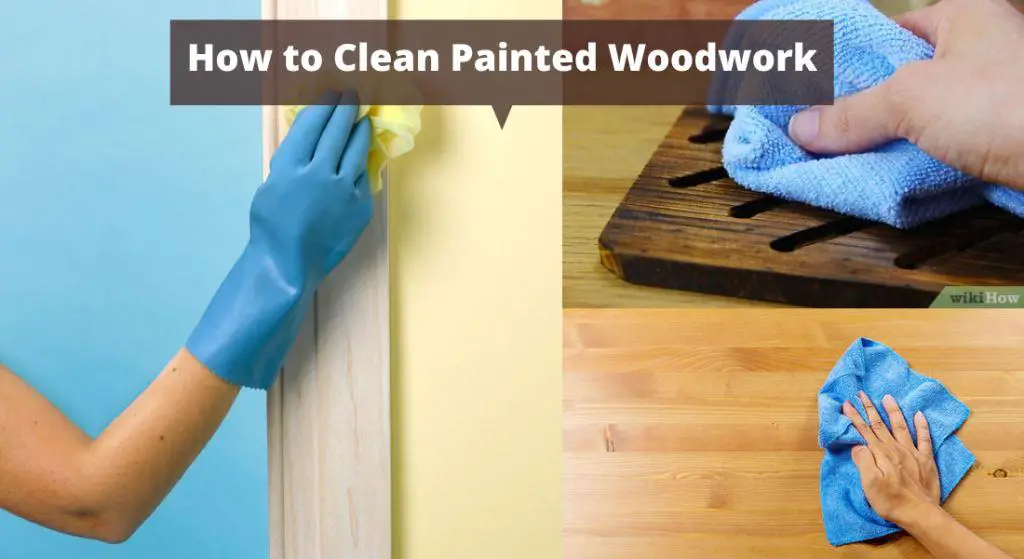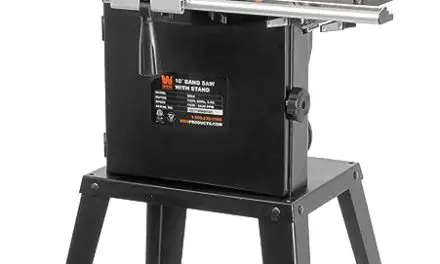Cleaning painted woodwork can seem like an intimidating task, but it doesn’t have to be! With the right tools and techniques, you can easily restore shine and keep your woodwork looking good. In this guide, we’ll provide information on how to clean painted woodwork as well as tips for maintaining its beauty over time.
Cleaning painted woodwork is an easy task if done correctly, so take the necessary steps to ensure your furniture looks its best. With a little bit of effort, you can keep your painted woodwork looking beautiful for years to come.
To start off, here is a list of materials you will need in order to get started:
Materials Needed:
1. Soft clothes or sponges
2. Mild detergent
3. Bucket of warm water
4. Vinegar or rubbing alcohol (for tougher stains)
How to Clean Painted Woodwork? – Steps to Follow:
1. Begin by dusting the woodwork with a soft cloth. This will help to remove any dirt that has settled on the painted surface.
2. Fill a bucket with warm water and add a small amount of mild detergent. Soak a sponge in the soapy mixture then wring it out before wiping down the painted woodwork. Make sure to rinse the sponge frequently as you go.
3. Rinse off the soapy residue with a clean, damp cloth. Dry the woodwork with another soft cloth to avoid streaks and watermarks.
4. For tougher stains, dip a cloth in vinegar or rubbing alcohol and rub it over the stain until it is removed. Rinse the area with a damp cloth and dry with a soft towel.
5. Repeat these steps as needed to maintain an even looking finish on your painted woodwork.
Tips:
1. Be sure to use mild detergents that are designed for cleaning painted surfaces, as harsher chemicals can damage them over time.
2. Always test any solution or cleaner on an inconspicuous spot of the painted surface first before using it on the entire piece of furniture.
3. When cleaning painted woodwork, use circular strokes to avoid wearing down the surface.
4. Clean your painted surfaces regularly to prevent dirt from building up over time and causing permanent damage.
5. Avoid using scouring pads or abrasive cleaners, as they can also cause damage to the paint finish.
6. Be sure to wear gloves and eye protection when cleaning with vinegar or rubbing alcohol.
For more stubborn stains, consult a professional cleaner for advice. They may be able to remove the stain without damaging the woodwork beneath it.
What is the best cleaning solution for painted woodwork?
The best cleaning solution for painted woodwork depends on the type of paint used and the condition of the wood. For glossy finishes, use a mild detergent or all-purpose cleaner, such as dish soap diluted in warm water. Avoid cleaners that are too harsh or abrasive, which can damage the paint finish. For flat paints, use a damp cloth with a small amount of mild detergent or baking soda dissolved in warm water to wipe down surfaces gently and remove dirt. For heavily soiled areas, consider using a natural oil soap such as Murphy Oil Soap diluted in warm water instead of an all-purpose cleaner. This will help to protect the paint while still getting rid of any dirt build-up.
Finally, always test any cleaning solution to make sure it doesn’t damage the paint finish by using a small area first. If you need to clean woodwork with more than one type of paint, use separate cloths for each type and be sure to rinse off any soap residue with plain warm water. By following these steps, you can ensure your painted woodwork looks its best for many years to come!
Best cleaner for painted woodwork:
The best cleaner for painted woodwork is a mild, non-abrasive detergent. This type of cleaner is usually found in a liquid form and should be applied with a damp cloth or sponge. Avoid using cleaners with bleach or harsh chemicals as they can damage the paint finish. It’s also important to never use steel wool or any other abrasive materials on painted woodwork, as this could scratch the surface. After cleaning, it’s recommended that you apply a coat of wax to protect the painted surface and keep it looking its best. With proper care and maintenance, your painted woodwork can look beautiful for years to come.
If you have stubborn stains, such as grease or oil spills, you may need to use a stronger cleaner. In this case, you’ll want to use a product that is specifically designed for removing grease and oil stains from painted surfaces. Make sure to read the directions carefully before using any type of cleaner on your painted woodwork as some may require additional steps such as rinsing or wiping off with a damp cloth after application. Taking the extra step will ensure that you don’t damage your paint job in the process.
Finally, it’s important to remember that the best way to keep your painted woodwork looking its best is through regular cleaning and maintenance. Dust and dirt can accumulate over time if left unchecked, so make sure to give your wooden furniture a good dusting regularly. Doing so will not only help maintain its appearance but also protect the paint from fading and wear. With proper care, your painted woodwork can look great for years to come!
FAQs:
Q: How often should I clean painted woodwork?
A: To maintain its beauty, you should aim to clean your painted woodwork at least once per month. This will help prevent dirt and dust. it will be easier for you to keep your woodwork looking its best.
Q: What type of cleaner should I use to clean painted woodwork?
A: For general cleaning, you can use a mild detergent in lukewarm water. Avoid abrasive cleaners and scrubbing brushes as they might damage the paint finish. If necessary, you can also use an all-purpose household cleaner or a specialized wood cleaner. Be sure to test any new products on a small area before using them over the entire surface.
Q: How do I remove scuffs and scratches from my painted woodwork?
A: Scuffs and scratches can generally be removed with a damp cloth and some steel wool or fine sandpaper. Start by lightly rubbing the affected area with the steel wool or sandpaper. If the scuff or scratch is still visible, you may need to use a touch-up kit specifically designed for painted woodwork. Once you’ve removed the scratch or scuff, buff the area with a soft cloth and give it a light coat of wax for added protection.
Q: What kind of maintenance do I need to perform on my painted woodwork?
A: In general, regular dusting and occasional spot cleaning should be enough to maintain your painted woodwork and keep it looking its best. You can also give your paint job an extra layer of protection by applying a coat of furniture wax every few months. This will help protect against dirt and grime buildup while giving your woodwork a beautiful shine.
Q: How can I protect my painted woodwork from damage?
A: To help protect your painted woodwork from damage, it’s important to use placemats and coasters when placing items on top of the surface. It’s also a good idea to keep sharp objects away from painted wood surfaces since they can easily scratch or chip the paint. Finally, try to avoid direct sunlight as much as possible as this can cause fading and discoloration over time. With just a little care and maintenance, your painted woodwork will stay looking great for years to come!
Q: Can I use harsh chemicals when cleaning my painted woodwork?
A: Harsh chemicals do not recommend for this task. These types of chemicals can damage the paint and lead to fading or discoloration. Stick with mild detergents and soaps when cleaning your painted woodwork in order to avoid any unwanted damage.
In conclusion, cleaning painted woodwork does not have to be a difficult task. With the right supplies and techniques, you can easily restore shine and keep your woodwork looking beautiful. Remember to clean your painted woodwork at least once a month in order to maintain its beauty.



















